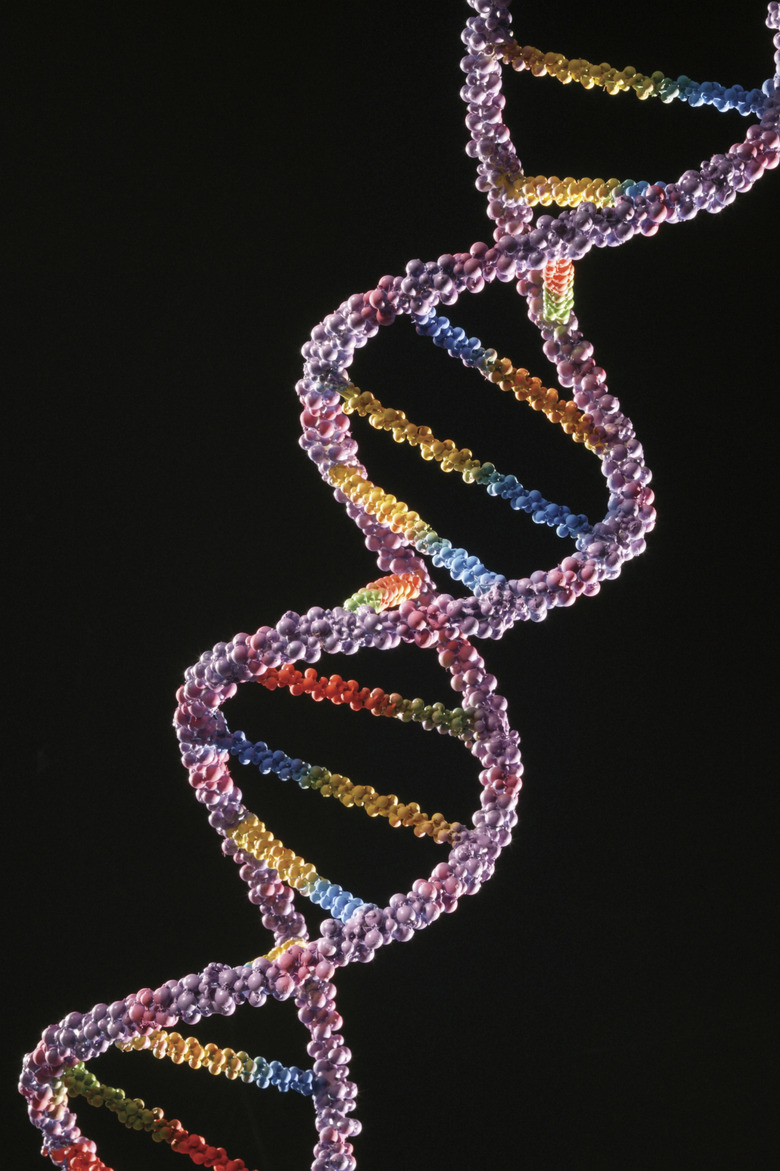An Enzyme That Catalyzes The Formation Of The DNA Molecule
A molecule of DNA is a study of complex simplicity. This molecule is vital for creating proteins that influence nearly every aspect of your body, but only a handful of building blocks make up the double helix structure of DNA. In DNA replication, the helix splits apart to form two new molecules. Although one enzyme catalyzes the replication process several other enzymes also play a role in the formation of a new DNA molecule.
Getting Started
Getting Started
The enzyme that catalyzes DNA replication is called DNA polymerase. Before DNA polymerase can begin its work, a starting point for replication must be found and the double helix must be split apart and unwound. The enzyme helicase performs both these tasks. The helicase enzyme finds a spot on the DNA molecule called the origin of replication and unzips the strand. DNA polymerase enzymes can then bind to the open half-strands. Once DNA polymerase starts to work, helicase continues moving down the strand unzipping the molecule as it goes.
Pairing Up
Pairing Up
The ladder rungs of DNA are made up of pairs of nucleotides. Adenine pairs with thymine, while guanine pairs with cytosine. When helicase opens the strands, these pairs are split. To form a new DNA molecule, new pairs must be made for the strands. DNA polymerase travels along the open strands adding new nucleotides as it goes. Each adenine on the old strand will get a new thymine, each old guanine will get a new cytosine, and vice versa.
Working Well With Others
Working Well With Others
DNA polymerase may get most of the attention in DNA replication, but without two other enzymes, the open strands of DNA would lose their structure. When helicase splits the molecule of DNA, the strand is at risk of snapping back into a tight coil. To prevent the strands from becoming a tangle whose knots would halt the replication process, topoisomerase works to keep the strands straight. DNA polymerase also needs a little help finding where to start. In fact, it can't find its job site without the help of primase. DNA polymerase can't recognize the origin of replication until primase has bound to the starting point and makes a primer of eight to 10 nucleotides. Once DNA polymerase finds the primer made by primase, work can commence.
Joining Up
Joining Up
DNA polymerase works smoothly in one direction of replication, but not as well in the other direction and needs another enzyme to make up for this. Along one strand, the new DNA molecule will be a solid string of new nucleotides, but on the other strand, the new nucleotides are created in short segments with a primer at the beginning of each segment. These segments are called Okazaki fragments and require the enzyme ligase to join them together.
Cite This Article
MLA
Painter, Tammie. "An Enzyme That Catalyzes The Formation Of The DNA Molecule" sciencing.com, https://www.sciencing.com/enzyme-catalyzes-formation-dna-molecule-23696/. 24 April 2017.
APA
Painter, Tammie. (2017, April 24). An Enzyme That Catalyzes The Formation Of The DNA Molecule. sciencing.com. Retrieved from https://www.sciencing.com/enzyme-catalyzes-formation-dna-molecule-23696/
Chicago
Painter, Tammie. An Enzyme That Catalyzes The Formation Of The DNA Molecule last modified March 24, 2022. https://www.sciencing.com/enzyme-catalyzes-formation-dna-molecule-23696/
